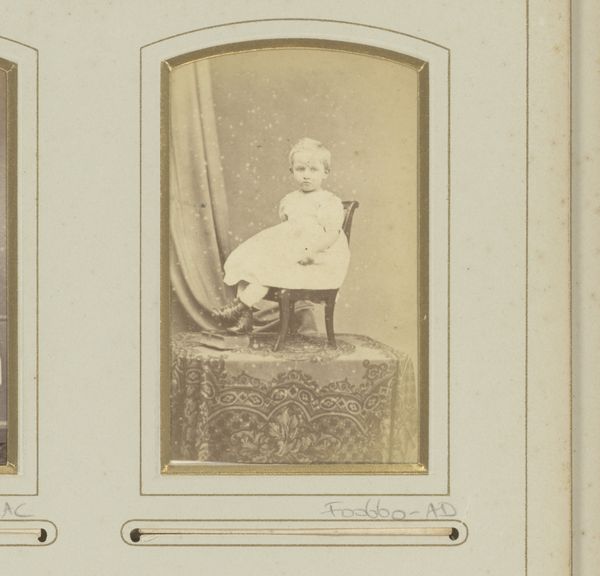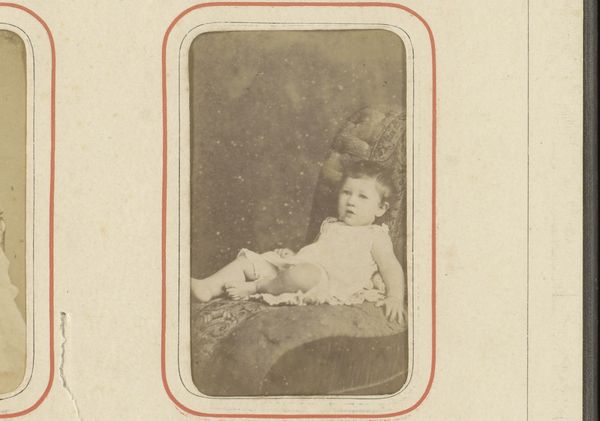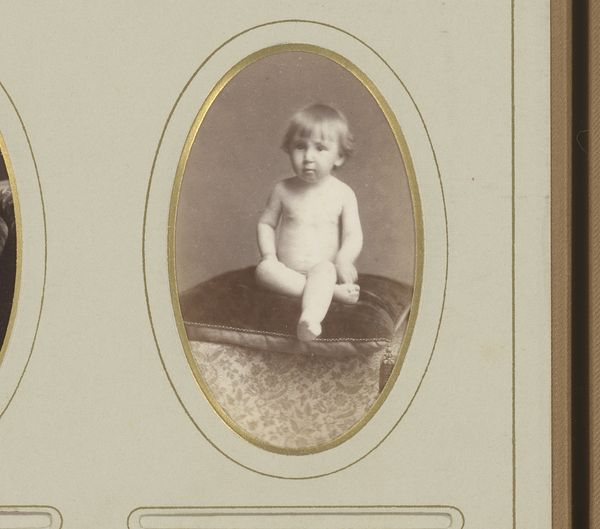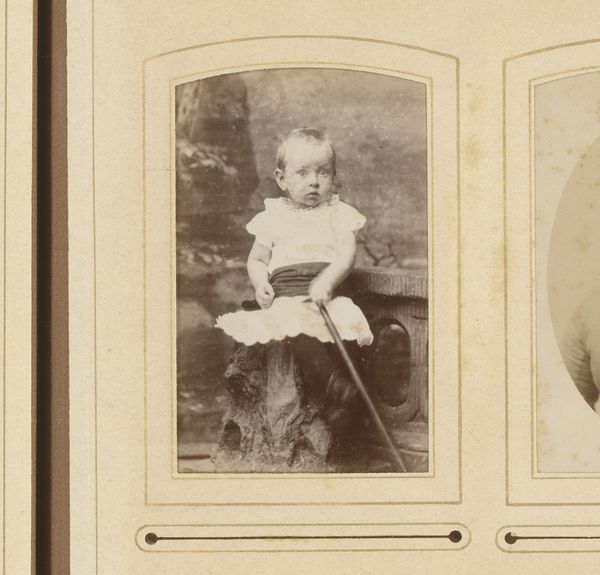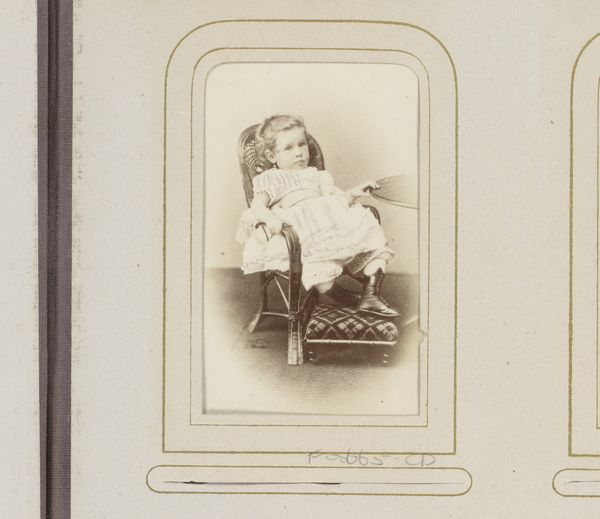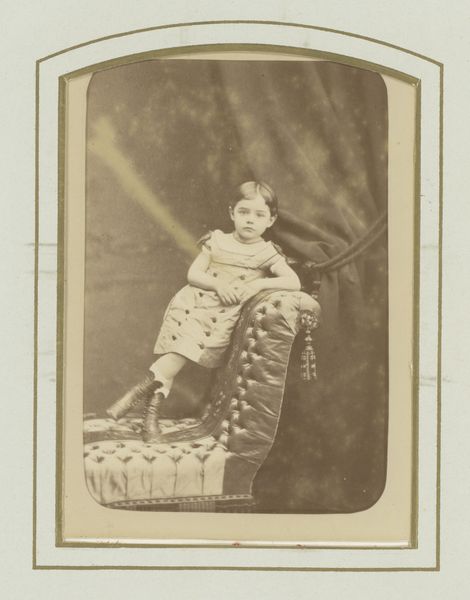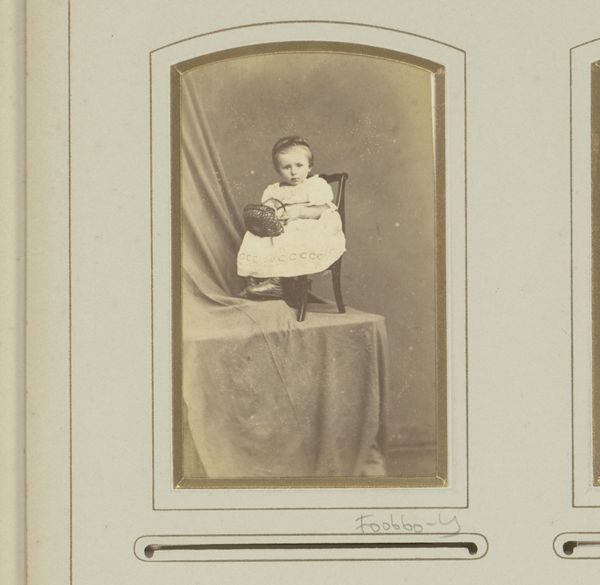
photography
#
portrait
#
aged paper
#
toned paper
#
16_19th-century
#
aged
#
antique
#
pictorialism
#
photography
#
brown and beige
#
underpainting
#
19th century
#
genre-painting
Dimensions: height 90 mm, width 50 mm, height 260 mm, width 210 mm
Copyright: Rijks Museum: Open Domain
Editor: So, this photograph, "Studioportret van Guus Kessler in een matrozenpakje," taken by Albert Greiner between 1890 and 1895, is striking in its formality. The subject, a young boy, seems posed and perhaps a bit uncomfortable. What strikes you most about it? Curator: It’s fascinating to consider how photographic portraits like this one became accessible to the burgeoning middle class in the late 19th century. This image isn't just about capturing a likeness, but about participating in a social ritual. What does the sailor suit tell us? Editor: I guess it reflects the rising interest in maritime themes and perhaps alludes to social status, like a display of wealth. But why the specific emphasis on childhood and this formal presentation? Curator: The choice of attire speaks volumes. The sailor suit was a fashionable symbol, often associated with youth, innocence, and even a romanticized view of naval power and global exploration. Wealthier families might choose to dress their children in this manner to subtly signify their place in society and expose the elite status early on. The popularity of childhood imagery increased during this period alongside the expansion of education and changing attitudes towards family. What role do you think photography played in documenting or shaping this period of transformation? Editor: It’s like photography helped to solidify those new perceptions of childhood. It captured and broadcast ideals and aspirations but perhaps also contributed to constructing an image of childhood that was inaccessible to many. Curator: Exactly. It served as both a mirror and a constructor of social values. Images such as this provide insight into the aspirations and socio-economic structures of the time, influencing our contemporary perception. Editor: I hadn’t considered the broader impact it had on reinforcing or challenging social expectations. This makes me see beyond just a simple photograph. Curator: Absolutely. It underscores how deeply intertwined art is with the society that produces it, and how something as seemingly simple as a child's portrait reveals volumes about broader cultural values and social power dynamics.
Comments
No comments
Be the first to comment and join the conversation on the ultimate creative platform.


